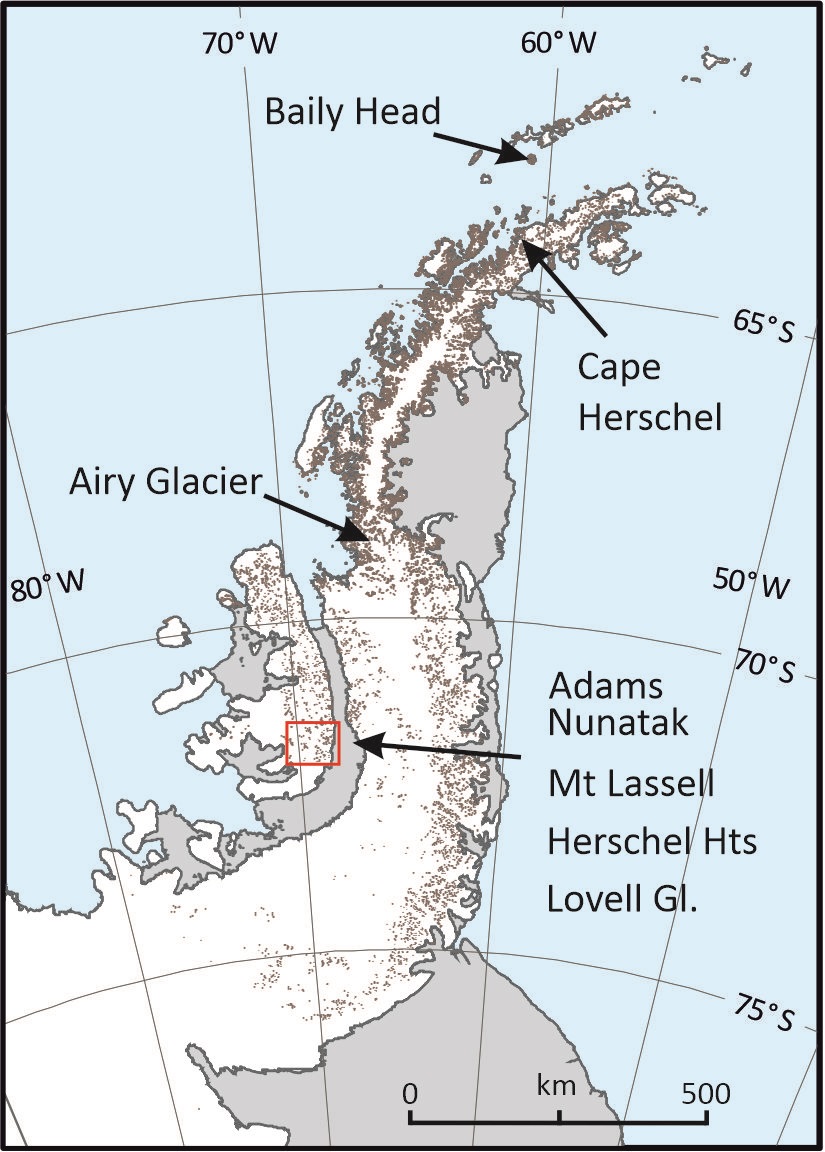The Royal Astronomical Society (RAS), founded in 1820, encourages and promotes the study of astronomy, solar-system science, geophysics and closely related branches of science. Its headquarters in Burlington House has an important library and archive. The Society had a notable collection of scientific instruments, but this was largely dispersed to museums in the 1970s. Many Presidents of the RAS are recognised in Antarctic Peninsula region place-names.
Nineteenth century astronomers played an important role in the development of the navigational techniques and instruments vital for early naval exploration of the region: Sir George Airy, Airy Glacier, leading figure in the development of Greenwich Observatory and the Greenwich Prime Meridian; Francis Baily, Baily Head, promoter of gravity studies and reform of the nautical almanac; Sir John Herschel, Cape Herschel, polymath with many achievements, including cataloguing the stars and astronomical bodies of the southern hemisphere.
Others are recognised in a place-name theme for astronomers and their discoveries on southern Alexander Island: John Couch Adams, Adams Nunatak, codiscoverer of Neptune and promoter of the Greenwich Prime Meridian; Sir Frederick Herschel, Herschel Heights, discoverer of Enceladus and Mimas, satellites of Saturn; William Lassell, Lassell Glacier, discoverer of Ariel and Umbriel, satellites of Uranus, and Triton, satellite of Neptune; Sir Bernard Lovell, Lovell Glacier, first Director of Jodrell Bank Observatory.
